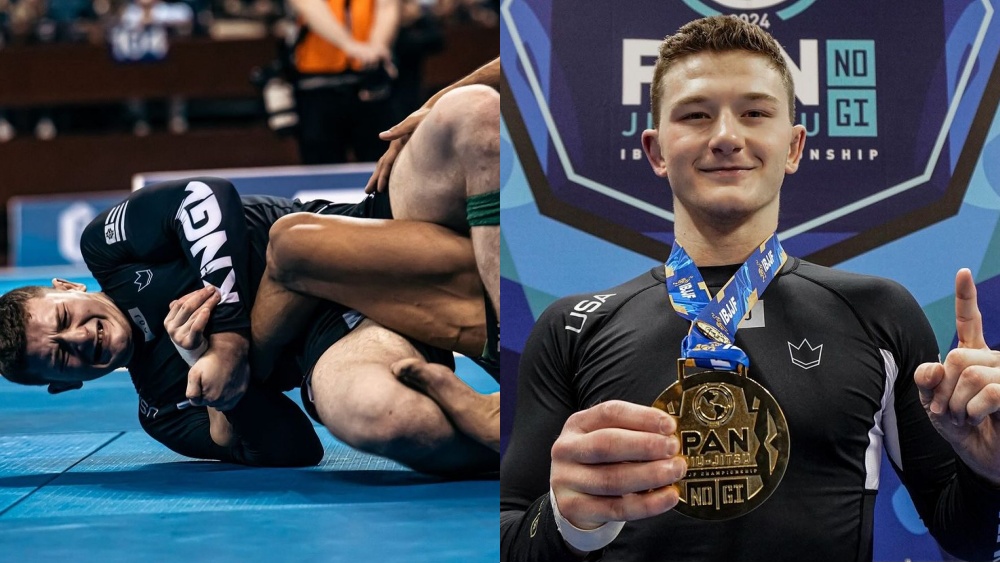Brazilian Jiu-Jitsu is a martial art known for its complex techniques, ground fighting, and submissions. While much attention is often given to sweeps from the guard and submissions, foot sweeps are equally important but, for some reason, not as explored. Foot sweeps can be a powerful weapon in a BJJ practitioner’s arsenal, offering opportunities to off-balance and control opponents. This article will delve into what you should know about foot sweeps in the art of Jiu-Jitsu.
What Are Foot Sweeps In BJJ?
Foot sweeps are techniques that involve using your foot or leg to sweep an opponent’s foot out from under them, causing them to lose balance and potentially fall. In Jiu-Jitsu, foot sweeps are typically used in stand-up situations, such as during takedowns or when transitioning from standing to the ground. They can be executed with precision and timing to catch opponents off-guard.
The foot sweep is a great option to use because they are a subtle way to attack the opponent. Coupled with using Kuzushi (off-balancing techniques), the combination of moving the opponent and sweeping them over offers a lot of value to anyone who spends time mastering them.
While it is safe to say that other forms of takedowns are equally useful (especially single and double leg takedowns), utilizing foot sweeps offers tremendous value as it can be used in various grappling situations, meaning that you can hit a nice foot sweep in Gi, No-Gi and even mixed martial arts. Also, the foot sweep does not require any unique attributes to pull off, and it can be used by practitioners of all ages and sizes. Compare this to, let’s say, the double leg takedown, where grapplers with mobility issues find it difficult to execute; using foot sweeps is a viable option for such situations.
Foot Sweeps From The Underhook
In this video, BJJ black belt Brian Glick shares several No-Gi foot sweeps from the basic underhook. Brian is a long-time John Danaher student and is one of the innovators of modern-day Brazilian Jiu-Jitsu. These techniques are applicable in Gi BJJ as well. Depending on the case, you can use the suggested grips or substitute them with a collar or sleeve grip.
Osoto Gari
The first foot sweep is the Osoto Gari or outside Large outer reap. From a typical clinch situation, establish your underhook on the near side arm and place your head on the side of the opponent’s as you control their far arm. Doing these will give you a strong base from which you can use the Osoto Gari. Step through and place your leg on the opponent’s far leg as you put pressure on their shoulder with your underhook. Two things may happen as you take these steps: the opponent will fall (successful sweep), or they will rebalance by stepping with a wider base. A typical reaction to the No-Gi Osoto Gari is the opponent picking up your leg. Do not fret and continue with your forward motion, as your underhook will nullify their attempts to counter your technique.
De Ashi Barai
The De Ashi Barai is the recommended follow-up technique to the failed Osoto Gari. This is where you sweep the unweighted foot to bring both feet together, thus sweeping them over or at least off-balance the opponent. As the opponent steps to defend the Osoto, follow up with your own and collect their feet by sweeping the near leg instead of the far one. Doing this while will remove their base from underneath, thus forcing them to fall on the mat. Of course, the opponent will do whatever it takes to regain balance. This is where the following techniques come in: the Uchi Mata and Kouchi Gari combination.
Uchi Mata To Kouchi Gari
Note that these are 2 separate techniques, but we decided to include them as one as they work seamlessly together. From the basic underhook, ensure you stand slightly at the side but not too far off the center. Step through as you reap with your leg to elevate the opponent’s near side leg. This will force the opponent to either fall or base out by stepping. If they base out, place your foot on their far leg and trip them over.
Ouchi Gari
The last technique is the Ouchi Gari. All the techniques we’ve shown so far are forward throws, and your opponent will inevitably place their weight backward to avoid getting swept. This is where the Ouchi Gari comes in. In the event this happens, use your leg to reap inside the opponent’s near side leg as you keep them close. Doing this will remove their base from underneath and thus make them fall to the mat.
General Tips And Suggestions
Foot sweeps have many moving parts and can be very nuanced, especially for beginners. Here are several tips to help improve and elevate your foot sweeps as fast as possible.
Get A Solid Grip
You need to first establish a good grip before attempting to attack. You can do this by either getting a grip on the opponent’s lapel and sleeves or using wrestling moves like the underhook. Regardless of your choice, getting a solid grip is one of the most important ingredients to a successful throw or sweep.
Footwork And Kuzushi
Foot sweeps require you to be in a specific position before you execute the technique. With this, it is crucial to have proper footwork so that you can always stay in the right spot at all times. Also, you should be off-balancing your opponent as you do this so that you keep them on the defensive as you position yourself for an attack.
Commitment
Like most standing techniques, you should commit fully to your technique once you decide to attack. It is not a smart idea to stay half-hearted as you execute foot sweeps, takedowns, and throws, as you will get countered immediately.
Conclusion
Foot sweeps in Brazilian Jiu-Jitsu can open up various attacking opportunities for you. We encourage you to study our shared techniques and find time to drill them whenever you go to your academy. Keep training, and hope to see you on the mats!
You may also like:
















